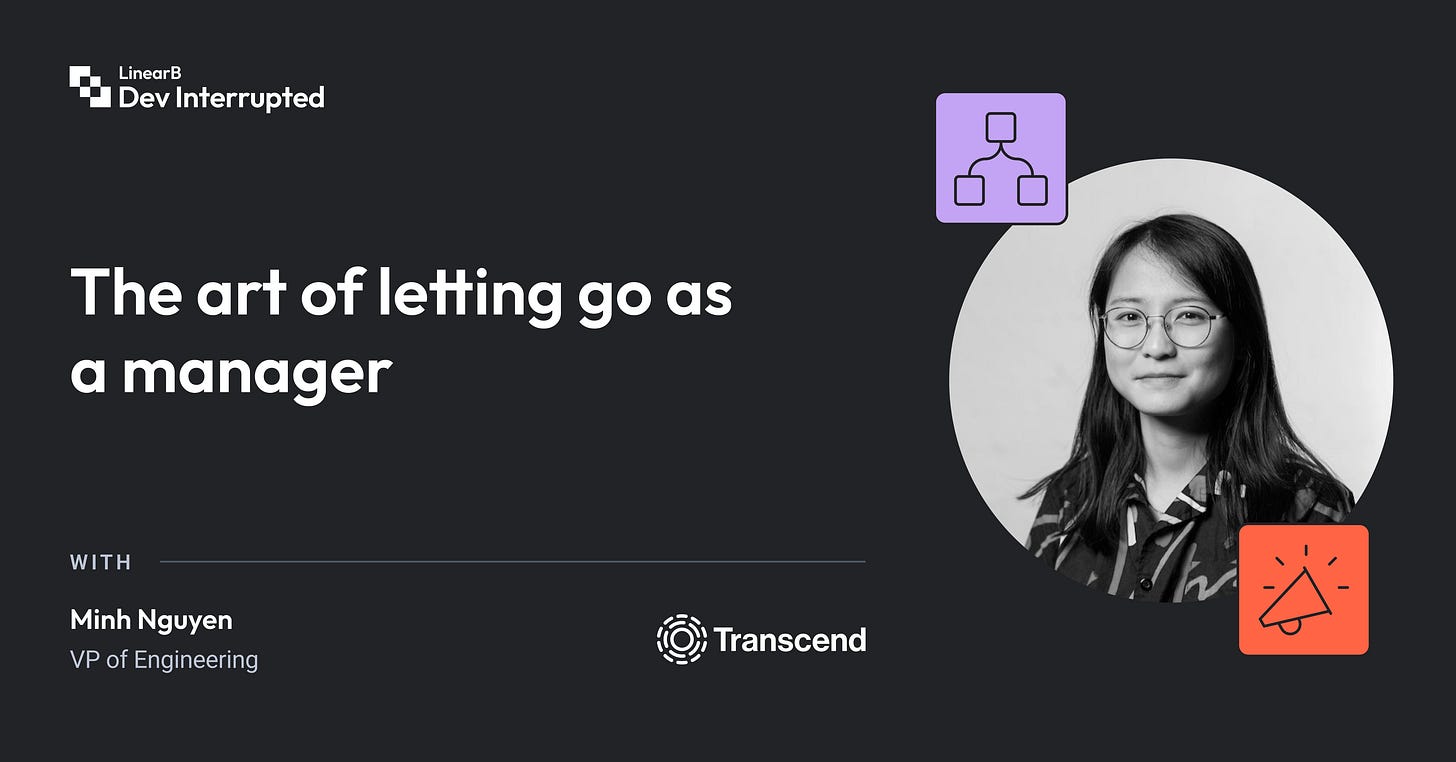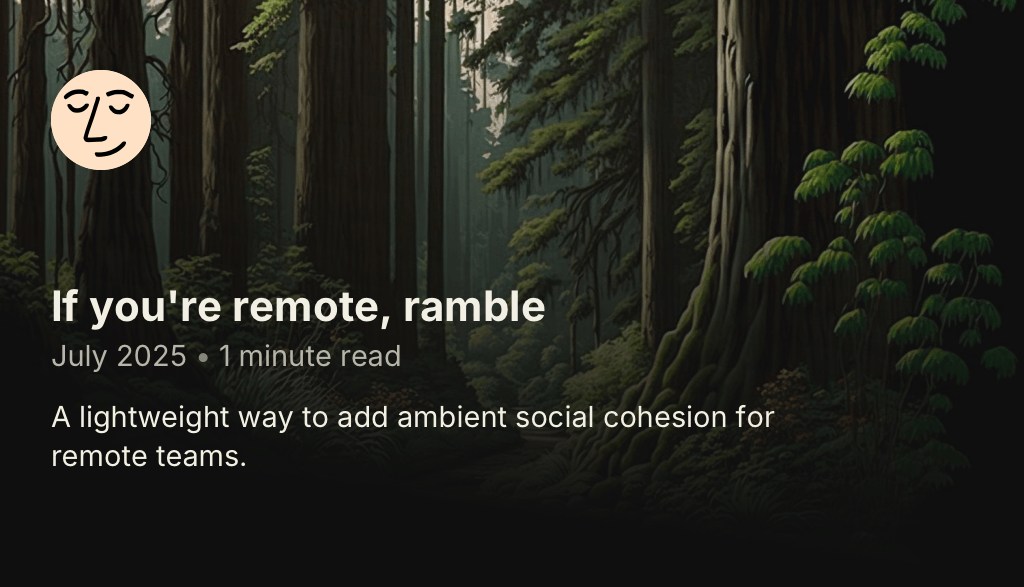The art of letting go as a manager | Transcend’s Minh Nguyen
Unlearning the habits of being an IC
What's the hardest habit for a top engineer to unlearn in a leadership role?
For Minh Nguyen, VP of Engineering at Transcend, it was breaking the "I'll do it myself" mentality. In this episode, she shares her impressive journey from individual contributor to VP at the same high-growth startup, offering a rare and honest look at this challenging transition. Drawing on her background in philosophy, Minh details the hard-won lessons of reorienting from hands-on coding to high-impact leadership, from learning to delegate to setting a clear, communicable strategy.
The conversation then shifts from personal growth to organizational design. Minh dives into the practicalities of scaling, revealing why Transcend structures teams around customer problems instead of technical stacks. She candidly discusses her experience pivoting away from a "catchall" platform team to a more effective, product-focused model. This episode is a deep dive for any leader on building a resilient, high-fidelity engineering culture that thrives under pressure, packed with invaluable insights for navigating the challenges of growth.
"I think the hardest [habit to unlearn] is just the 'I'll do it myself' mentality, right? Fast in the short run, but then you're kind of stuck doing it forever." - Minh Nguyen
The Download
The Download has the latest tech news stories for your context window. 🪟
1. Figma’s IPO shatters expectations. Does this end the tech IPO ice age? 🧊
Figma just pulled off the biggest first-day pop for a U.S. tech IPO in decades, skyrocketing from an initial price of $33 to an intraday high of $148. With a valuation now hovering around $57 billion, this isn't just a win for Figma, as it more broadly signals a bullish market for software startups, especially those that prioritize profitability and end user adoption.
Read: Figma didn’t just beat expectations today. It blew the doors off.
2. AI scrapers are playing hide and seek with Perplexity’s crawlers 🕵️♂️
When we last covered this story, Cloudflare took measures to block unwanted site scrappers. Well, it didn’t take long for an AI company to find a workaround. Perplexity purportedly got crafty, using stealth tactics to bypass website no-crawl directives. Their bots are morphing user identities and ignoring robots.txt files. This cat-and-mouse game raises serious questions about data privacy, the ethics of AI scraping, and what we can do to prevent them (turns out, maybe not much?)
Read: Perplexity is using stealth, undeclared crawlers to evade website no-crawl directives
3. The Asynchronous Water Cooler 💧
For remote teams of 2-10, creating a “ramblings” channel could be the secret sauce to fostering connection according to this fun blog post from Steph Ango, CEO of Obsidian (a software which I, personally, can not envision living without). A “ramblings” channel is a virtual water cooler where teammates can share thoughts without cluttering up the main chat. Like a microblog, or a scratchpad, it’s about co-working in the open. It’s a simple yet effective way to enhance team cohesion and keep the creative juices flowing.
Read: If you're remote, ramble
4. AI promised us a productivity utopia, but yet here we are… 😩
Remember when AI was supposed to save us time? Regular guest
hits the truth in her recent article on . Instead of time saved, our calendars have filled with more meetings and busywork than ever before. It’s a classic case of “more tools, more problems.” Are we just trading one set of inefficiencies for another?AI-powered code reviews that move at the speed of your team
Pull requests aren’t slowing down, and your review process shouldn’t either. LinearB AI transforms review from a bottleneck into a decision advantage:
🔎 Context: Instant, AI-generated PR summaries so reviewers spend time thinking, not digging.
⚡ Insight: Suggestions that surface design risks, logic gaps, and security concerns, not just style violations (but yes, also those).
📬 Routing: Automatically connects the right reviewers to the right code, based on expertise and history.
The payoff? Faster cycle times, higher-quality merges, and reviewers who can focus on the architectural and business impact of every change.
AI doesn’t replace engineering judgment, it amplifies it. See how your team can review less, catch more, and ship smarter.
5. Writing code was never the bottleneck! 📚
In a timely and much-needed piece, tech journalist Jen Riggins argues that the real bottlenecks lie not in creating code itself, but in the processes both surrounding it and downstream from it. Like we discussed last week with Andrew Boyagi, this game of time-saved whack-a-mole is omnipresent across the industry. This article from Riggins is packed with supporting evidence from surveys and experts and connects the threads on the productivity disconnect.









